Oita time has passed, but on March 12, a tour limited to correspondents of Chuo-ku Tourism Association on March 12
"Let's learn the vaudeville characters from Master Tachibana rightmon!" I've been participating in this event and have shown intellectual curiosity.
I'd like to write on my blog so that I don't forget it.
The venue is the Yomiuri IS building in Ningyocho, which is called Ningyocho Suehiro until 1970.
It's the place where there was a vaudeville.
Since it was the place where Ningyocho Suehiro was located, the Yomiuri IS Building has been around since 2011.
It seems that "Yomiuri Aies Rakugo" is held once a year.
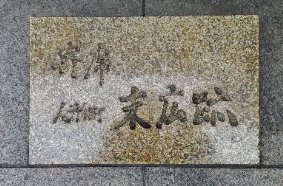
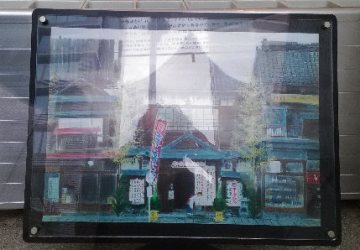
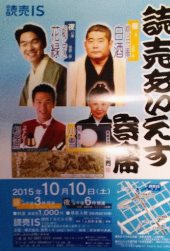
By the way, it is a vaudeville character, but this is one of the four Edo characters.
It is a character that decorates the world of rakugo as if you read it.
The four Edo characters are the Kantei-ryu, which is used in Kabuki, sumo wrestling, and shrines.
There are "Edo characters" in a narrow sense that are used in Sensha bills and Japanese lantern, etc.
(in a broad sense) It seems to be called "Edo character".
※Only Kabuki's Kantei-ryu is a name for the school as "XX-ryu", so please explain the explanation of the teacher right gate.
After hearing, I was finally able to organize "Edo characters four" in my head.
Edo character (wide sense) - Yoseki character (for yoseki)
―Kantei-ryu (for Kabuki)
―Sumo character (for sumo)
―Edo character (narrow sense: Senshafuda)
The features of the vaudeville characters are 1 brush thickness, 2 rising right, 3 small margins, 4 roundness, and 5 rounds.
That said, "customers are vaudents without gaps" and "industry is rising to the right"
I'm going to do it.
In addition, the origin of the vaudeville characters is the Konya craftsman named Eijiro (Eijiro) in Tenpo 7 (1836).
It seems to be a typeface called "vira character" made by eclecticing Japanese lantern character and Kantei style.
The leaflet was so called because it was used for the vaudeville.
After that, "Bira Kiyo" and "Birashin" wrote leaflet characters, but they were masters of leaflet characters.
After the death of the second generation Villa Tatsuno, who was called, Ukon Tachibana was influenced by the villa character, and added ingenuity.
It seems that he has established the "Yoseki character".
The current vaudeville characters are said to have been handed down to the orthodox by the Tachibana style vaudeville characters.
Umon Master is the 16th direct disciple of Iemoto Ukon Tachibana (above).
(Because Master Ukon has died), he will be the last disciple.
On the tour, there was also an experience of actually writing vaudeville characters myself.
Of course, the vaudeville characters (although I think other Edo characters are probably the same) are written with brush and ink.
But it's completely different from calligraphy.
The calligraphy is written with the elbow raised (floating), but the vaudeville characters are like a pencil with the back of the hand on the desk.
I'll write it on. Also, the writing order is different from the calligraphy one, and the font has changed.
It looks like a completely different kanji. According to the teacher, "painting" rather than "writing"
He said it was a "draw" sensation.
I will put the example character and the character I wrote in the picture.
"I'm writing just one. 。 。 。 。 The upper two in the third row from the left are the teacher's character.)
(The other characters are written only "4" and "5", but the teacher who says "First from the horizontal bar"
I followed the teachings and practiced "one" in a straightforward manner.)
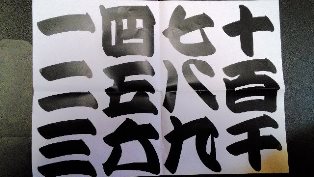
Photo of vaudeville characters (example)
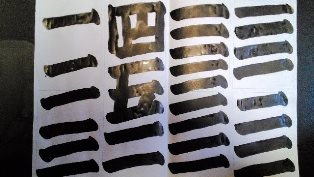
Photo of vaudeville characters (for your own)
It would be boring if the only letters I wrote on the tour were my own, so Mr.
The following is a handwritten vaudeville characters written on the spot as demonstration.
Please take a look at the beautiful and powerful characters of the Tachibana-ryu Honke.
According to the teacher, some of the women who saw the letters are fainted by the beauty.
The female participants this time seemed to have barely escaped the faintness.
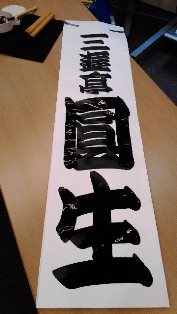
Also, I often use the font of the computer to "Yoseki character font"
I think there are things like this, but these are not really "vaude characters" in the true sense.
It was drawn by a font designer in a similar way.
It cannot be called "Yoseki character". Please be careful. (From the teacher)
After all, the actual "vaudeville characters" are "spaces" and "thick brushes" on a specific space such as paper.
A human being actually painted beautifully with a brush, conscious of "stretching right".
I understand that there is a taste.
Throughout the course, when you look at Edo characters in the city, as well as the vaudeville characters, what are the differences?
I became aware of it. Thank you very much for your precious tour.

